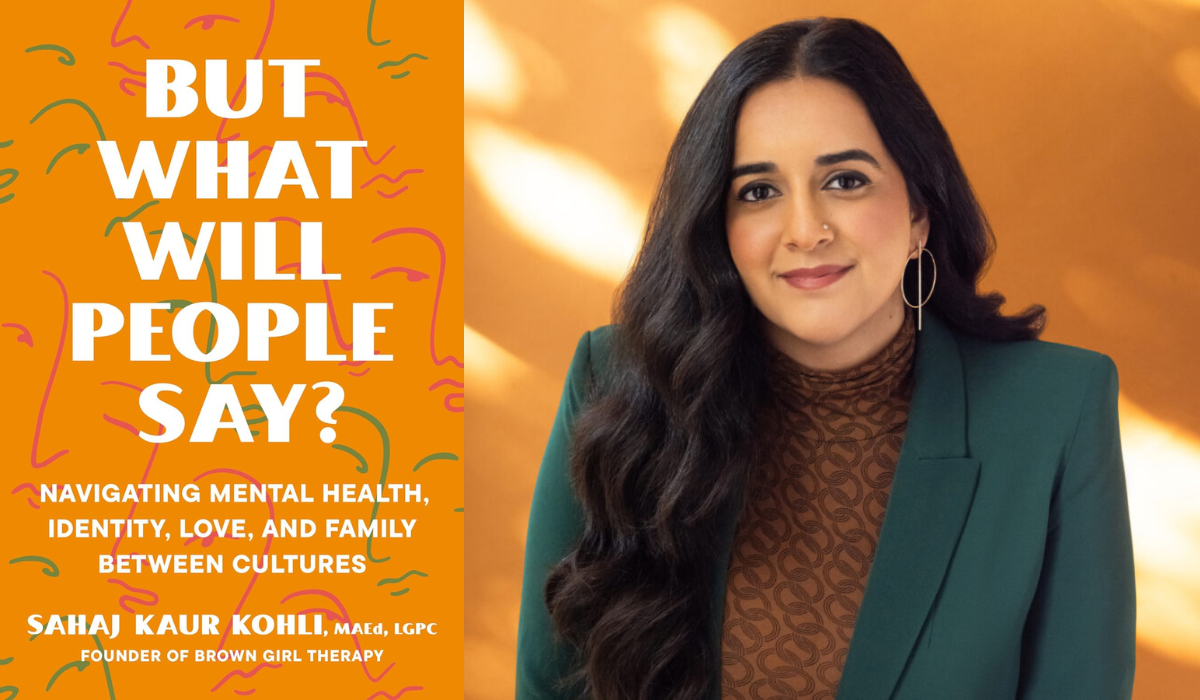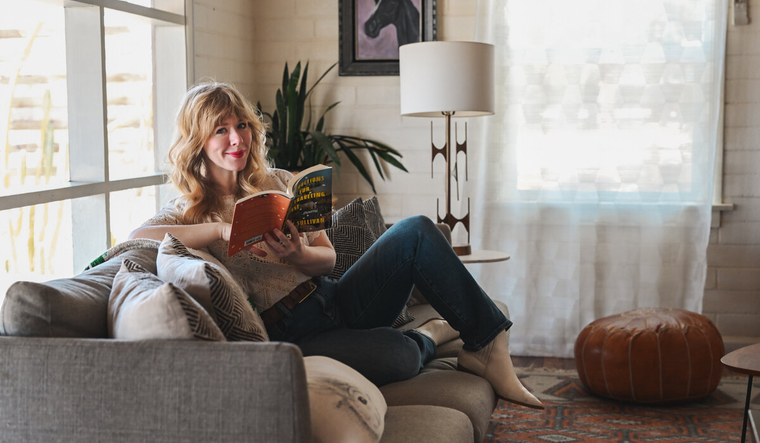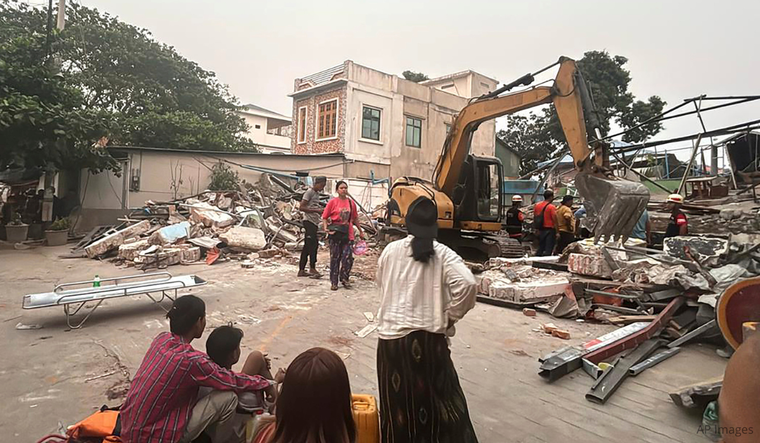When You Have Multiple Cultural Identities, Your Therapy Needs to Adjust. Here’s How
Like so many children of immigrants, Sahaj Kaur Kohli struggled with her bicultural identity.
“My whole life has been about navigating the tension between the norms and expectations in my Indian household and the environment in which I was socialized,” Kaur Kohli tells The Sunday Paper. “I thought, ‘There’s no way I can be the only person who’s struggling with her bicultural identity.”
So, the journalist-turned-therapist launched Brown Girl Therapy, the first—and what would quickly become the largest—mental health community for children of immigrants that aims to destigmatize mental health and promote bicultural identity exploration. Now with her new book, But What Will People Say?: Navigating Mental Health, Identity, Love, and Family Between Cultures, Kaur Kohli is on a mission to spread her message even wider and help anyone straddling multiple cultures at once feel seen, heard, and accepted.
A CONVERSATION WITH SAHAJ KAUR KOHLI
Why do you think first-gens are left out of our collective dialogue about mental health and self-care?
Through the process of building Brown Girl Therapy—along with being in graduate school to become a therapist and realizing my training was informed by Eurocentric Western wellness narratives around individualism—I realized the mental health doesn’t totally speak to my cultural identity or the cultural identities of many others like me. Children of immigrants often navigate the tension between our cultural experiences, which are not at all represented, and Western conversations around wellness. Whether it’s boundary setting, relationships with our family, communication strategies, self-care—the way it looks for those of us who are bicultural is different, and we have to infuse culture into our conversations about mental health.
What do you mean by the Western narratives around individualism?
It’s really individualism versus collectivism. Immigrant families tend to be more collectivist by nature. What that means is that there is more of a priority of the family, of the community, of group harmony than there is of the individual. Whereas in individualistic cultures like we have in the Western world, there is more of a priority and taking care of yourself, of separating yourself from the family unit and becoming your own person.
If you’re bicultural, this may mean that in one culture you might be encouraged to take care of yourself sometimes at the expense of other people—and in the other culture you might be encouraged to take care of other people sometimes at the expense of yourself. This can create a lot of tension, and it’s one example of what I mean by having that experience of bicultural identity straddling.
Do you remember moments from your childhood where you were really confused by trying to straddle those two really different ways of being?
It was constant. One of my childhood best friends told me I was unreliable because we would make plans to hang out on the weekend then my parents would say, No, we have to go to a community gathering. So, while my friend thought I was always flaking on her, I just didn’t have the language to say, I’m actually being pulled into different directions! The result was that I felt bad about myself, and it made me resent my family dynamics because I didn’t have the language to understand what was actually happening.
Situations like that happened everywhere. It happened at school. It happened in relationships. As I grew up, I constantly felt like I was adopting a performative sense of self, where I learned the role I had to play to be accepted at home and the one I had to play to be accepted outside in the world.
It wasn’t until I actually brought this into my consciousness that I started to ask, What does it mean to be me? And, How do I want to blend these values? How do I want to show up as both Indian and American and not just Indian and Indian spaces and American and American spaces?
What are some of the most important things to look for in a therapist if you’re looking to explore your bicultural identity?
For people who come from a marginalized background, there’s often a lot more hesitancy to seek therapy because there’s a lot of confusion about how it’s going to help them or whether their therapist is going to understand their culture. There’s often a fear that maybe the therapist was not trained in a way to be culturally inclusive. I know with my own training, I wasn’t taught that. I had to build that knowledge and expertise myself and be very mindful.
It’s important to remember that therapy is a service like any other. You’re paying someone to do a job for you. If you were building a website and hiring a graphic designer, you wouldn’t just hire the first person you find, right? You’d consider how your aesthetic matches theirs and ask questions like, How much do you cost? Do your values and visions align with mine? Then, based on that conversation, you’ll know whether you want to hire that graphic designer or not.
Finding a therapist is very similar. Most therapists offer a free consultation, usually a 15- to 30-minute call, where you can ask questions and learn more about them and their practice. You can ask questions like, What do you think your role is as a therapist? Have you ever worked with someone who looks like me, or has the identity struggles I’ve faced? Asking questions like these will give you an idea of whether or not it feels like a comfortable fit.
Then, be honest with yourself about what you need to feel comfortable. For some people, it is the same cultural identity as their therapist. For others, it’s age, gender, or sexual orientation. You have to be honest with yourself, because research suggests the number one indicator of success for therapy is the comfort of the client. If you’re not comfortable, you’ll be less likely to open up and be willing to go to really dark and deep places with your therapist.
How can those reading this who don’t straddle multiple cultures help support those who do?
I like to say that everyone should read my book. Yes, it’s targeted to those who struggle with being from more than one culture. But the reality is that we all know, work with, or love someone who struggles because they are from more than one culture. And it doesn’t have to be an Eastern culture. It can be a European child of immigrants. By reading this book and understanding some of the struggles we have, you can be a better friend, a better colleague, a better boss.
I think the biggest takeaway from my book and my work is that there’s not just one way to be well. There’s not just one way to be in a relationship. There’s not just one way to communicate. And that’s what I want to challenge for everyone—the assumptions you hold about how you’re supposed to be when you’re professional, or how you’re supposed to talk to someone, or how you’re supposed to love someone, or how you’re supposed to be in a romantic relationship. Those are your assumptions and your conditioned beliefs about what it’s supposed to look like, but not everyone shares those same assumptions. Challenging that and being open to the idea that there are other ways to exist can help you show up better in those communities and with those people that you care about.
Do you have a practice that helps you sit with the hard emotions when they come up?
When things feel hard, I try to remind myself that it’s okay to slow down. It’s okay to stop. It’s okay to change your mind. Sometimes we just need to be rather than trying to figure out what to do.
What do you hope people will take away from your book?
I’m hoping people who struggle being from more than one culture will feel less alone. I hope that they realize the pieces of our stories we feel the most shame about are the pieces of our stories that need the most healing. And I hope that by sharing my story openly and vulnerably, people can connect with that story in some way. And in some ways, I hope that I’m holding up a mirror to people to ask, What is it that I can do now—to take some of these tools and tips offered in this book and be more honest with myself and with the people around me?
I also hope people who aren’t bicultural or other clinicians, educators, or people in power read this book and it builds a level of empathy and compassion. I hope it reminds them that we do come from different cultures, and we aren’t all taught the same things. And I hope it’ll challenge them to ask more questions and be more open to other ways of doing things and being well.

Please note that we may receive affiliate commissions from the sales of linked products.



